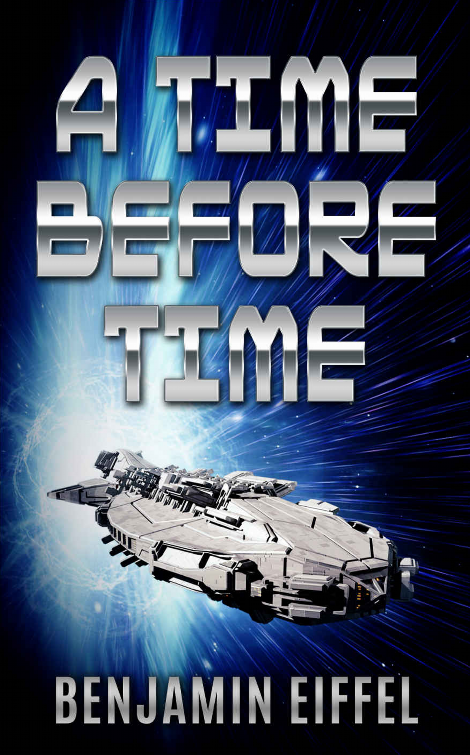
About a year ago I read A Time Before Time, and I said it was the worst book I had ever read.
But Mission in Time is definitely worse. Usually I don’t rate books I don’t finish reading, just to be fair, but this one gets a zero, even though I didn’t get past 25% into the book. By that time, I could not stand it anymore.
A Time Before Time was a time travel book where an astronaut, due to an accident, ends up landing in the Wild West. Mission in Time is a time travel book where two astronauts, due to a malfunction, end up landing off the coast of Massachusetts in 1774. Do those two plots sound similar?
Mission in Time is really bad for other reasons than A Time Before Time, so it warrants discussion here.
The author places two 21st century astronauts into a credible setting just before the revolutionary war in Massachusetts. The story is about how a person with knowledge and experience of today would be able to modify the outcome of the historic events of those days. Since I didn’t read past 25%, I actually don’t know how it ends, and whether the two hapless astronauts ever make it back. I don’t really care enough about them to find out and keep reading.
There are actually a number of excellent and very entertaining time travel stories in which the protagonists end up in the 19th century. Examples are John A. Heldt’s books The Mine and The Show. There is also Hollie Van Horne’s Reflections of Toddsville. Another is Seldon Edwards’ The Little Book. And of course the classic Time and Again and From Time to Time by Jack Finney are probably some of the best in this genre. I gave both Finney books four stars. You should read them.
In all these time travel books we experience how the protagonists get along in the past and enjoy their journeys. How they actually get there, and back again, is not all that important. It just happens through some fictional mechanism, and we accept it.
In Mission in Time however, Richard Scott spends the first five chapters of the book coming up with a “scientific” process that gets the astronauts displaced in time. And that’s where the problem lies. The “scientific” way is so flawed, so obviously silly, it’s distracting and insulting to the reader’s intelligence.
The mission is to have the astronauts travel a couple of years into the future. To do that, they are sent on a spaceship away from earth, and the theory is that the closer to the speed of light they travel, the more they are displaced into the future. Any science fiction fan will know that time dilation theoretically makes that possible. As a ship approaches the speed of light, time slows down on the ship, and relative to the earth left behind, the occupants age more slowly. The “twin paradox” is described in many science fiction stories, and the result is that the travelers who come back have aged more slowly, so their counterparts on earth have aged faster and are therefore older. So yes, the concept to traveling some distance into the future is valid and somewhat plausible.
However, in their trip, something goes wrong with the ship, and eventually the ship exceeds the speed of light. They were taught that if that happened, they would travel to the past, but since it had never been done before, they would not know how far into the past. This travel into the past, requiring a spaceship traveling faster than light, is a concept totally unfounded in physics. The author makes that up to explain how the astronauts eventually end up in the past. He could have just come up with a magic wand that transported them Harry Potter-style, the story would have been five chapters shorter, and actually much better. The reader would not have been distracted by the weird physics.
This is how the author describes to outbound trip:
Once free of gravity and the atmosphere, the neutrino accelerator took over. At first the weak propulsion of the neutrinos was negligible, but in outer space there is no atmosphere, which means no resistance. As the neutrino emissions continued, the ship gradually increased speed. Each second it was going faster than the previous second. After awhile we were really moving. When we’d been in space for about four months (Earth time) we were moving at 90 percent of the speed of light. As I’ve already explained, that was supposed to take us approximately two years into the future by the time we had returned to Earth.
Scott, Richard. Mission in Time: An incredible time-travel journey (p. 26). Winter Island Press. Kindle Edition.
To accelerate from zero to approximately the speed of light at 1g (one gravity) takes approximately a year. This is pretty simple to calculate. To be at 90 percent of the speed of light after 4 months, they would have to have accelerated at about 3g constantly. He describes the little spacecraft they were in:
Our cabin was about seven feet across and 12 feet from front to back. We could leave our seats, but because we were in space we couldn’t even walk in those 12 feet inside the cabin. We could float and pull ourselves about, which we did a lot, but that relatively confining cabin often felt more like a prison cell than the inside of a vehicle that was taking us somewhere to an unknown destination.
Scott, Richard. Mission in Time: An incredible time-travel journey (p. 29). Winter Island Press. Kindle Edition.
It does not sound like there was acceleration going on, just floating. But here it get really interesting:
We were nearing the terminus ad quem and waiting for the side thrusters to go into action. We needed to come to almost a complete stop before the side thrusters were activated. Here’s what blew my mind as we neared that stopping point. At that spot in space we were approximately 1.4 light years from Earth. That’s 8.4 trillion miles. The human mind can’t deal with distances like that. We couldn’t see our Sun from where we were. Not with the naked eye anyway. To put things in perspective, after traveling 1.4 light years from home, we were still in our own galaxy, the Milky Way.
Scott, Richard. Mission in Time: An incredible time-travel journey (pp. 26-27). Winter Island Press. Kindle Edition.
There are so many things wrong here I can hardly list them all.
First, he says they need to come to a complete stop in order to turn around. That spot in space was at 1.4 light years from Earth. If it took them 4 months to accelerate to light speed at 3g, to slow down to a complete stop and turn around and go back to Earth will take another 4 months at 3g acceleration, before they are stopped relative to Earth and can start going back, accelerating again to light speed for 4 months and decelerating again. Reading the author’s explanation sounds like the ship just stopped and the magic side thrusters turned it around to go back.
Then he says they couldn’t see the Sun from where they were? Really? They were 1.4 light years out, that’s about a third of the way to Alpha Centauri. From that point in space, the sun would still be by far the brightest star in the sky. But then, in the section below he states they saw Alpha Centauri, the closest star to Earth, and it was the biggest of them all – even though then it was still 2.6 light years away.
As we neared the final third of our trip back to Earth of an earlier time, we came closer than humans have ever come to many of the stars that I had seen through telescopes when I was younger. Off in the distance we saw an amazingly bright 61 Cygni, which is 11 light years from Earth, but appeared huge to us from our position in space. Again we saw a huge-looking Sirius, the brightest star in the sky when you’re looking at it from Earth. Then we saw Alpha Centauri, the closest star to Earth. To us, it was the biggest of them all.
Scott, Richard. Mission in Time: An incredible time-travel journey (p. 29). Winter Island Press. Kindle Edition.
So 61 Cygni, 11 light years from Earth, was suddenly “huge” when they were 1.4 light years closer to it, that’s assuming 61 Cygni is anywhere near the direction of Alpha Centauri.
Enough! You get the idea.
The first five chapters of the book are full of nonsense like this that the author sounds like he is trying to pass off as physics. But it’s just that, nonsense. The author should have had the two men hit by lightning as they walked the streets of Boston on a summer night and transported them to 1774 that way. It would have been a much better story, and the author would have maintained some semblance of credibility.
And I would not have written the longest book review ever about one of the worst books I have ever not finished reading.
Zero Stars

Like this:
Like Loading...






